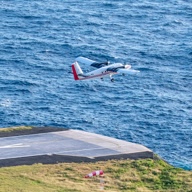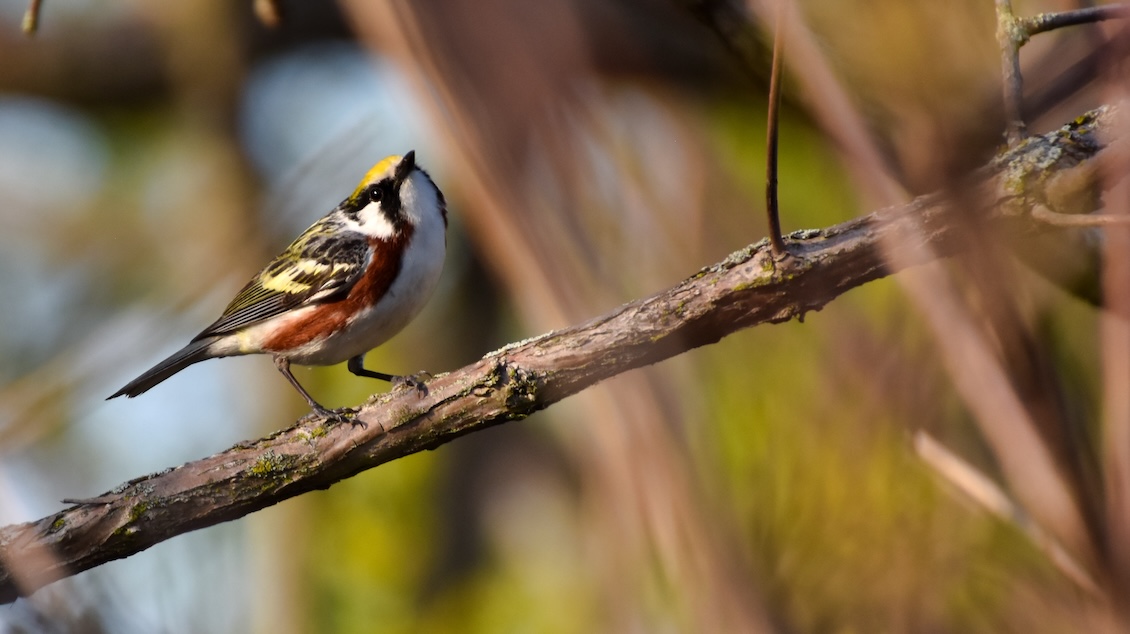A little while back, I embarked on the kind of trip every motorcycle rider dreams of. The team from EagleRider flew me out to Portland and hooked me up with a motorcycle, after which I screamed across the country on two wheels. All told, I was in six different cities, traveled 3,500 miles, and packed just two saddlebags worth of clothing and equipment (and by “equipment,” I mean 10 rolls of film, my camera, and some sunscreen), all for a trip that lasted just over four days.
I rode through the bitter cold, intense heat, rain for hundreds of miles, and traveled across every type of terrain this country has to offer. I saw its best, its worst, its most beautiful, and some of its downright ugliest. And I did it alone. No chase truck, no camera crew, no annoying people slowing me down; just the bike, the road, and me. While I like to think my previous 10 years on two wheels tempered me in ways that most riders aren’t, the truth is, this trip tested me. On day one alone, I put down over 1,000 miles in roughly 19 hours. It didn’t just tire me out; it beat the shit out of me. At the same time, it was one of the most rewarding experiences of my life.
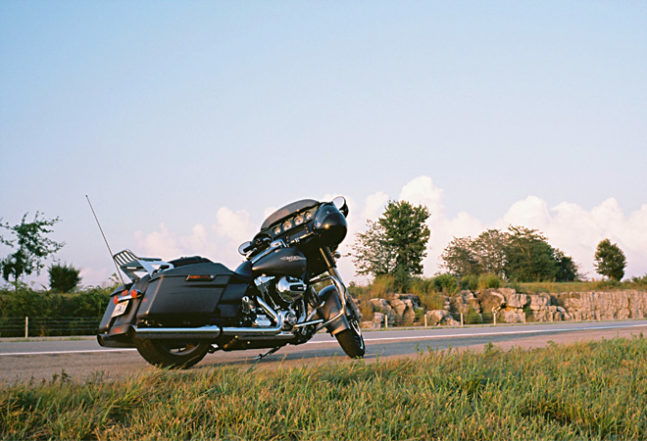
Storage: The Enemy From Day 1
I knew heading into the trip that storage was going to be my biggest issue. If I’d been packing up a truck for the haul, bringing enough stuff along would have been an easy task. But I didn’t have a truck; I had a shiny new 2016 Harley-Davidson Street Glide Special, which comes with two hard bags and nothing else.
Luckily, EagleRider saved me some space by setting me up with roadside assistance, saving me from packing all kinds of maintenance gear. Plus, the way I figured it, if anything was going to happen to the bike while I was out there, it likely wouldn’t be something I could fix with a couple half-inch sockets.
I kept it to one carry-on sized bag, filled with one pair of socks and underwear for every day I was on the road, two pair of denim jeans, two pair of gloves (One standard riding and one leather for chillier weather—those Montana nights get cold), four t-shirts, one sweatshirt, one flannel, one thermal shirt, a lined denim jacket, and a raincoat—which, unfortunately, came in handy for a few hundred miles of the trip. That, mixed with my film, camera, lens, and various toiletries proved almost too much for the Street Glide’s hard bags. Thankfully, I was able to make it work, and the trip didn’t have to end before it began.
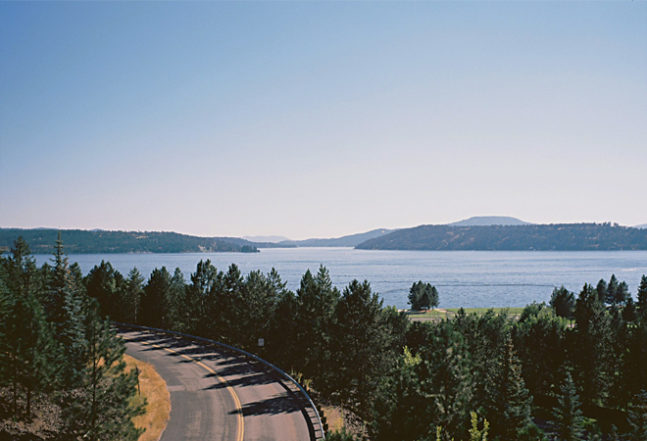
The Route
When I was first approached about taking this trip, I was given the opportunity to create a custom itinerary. I decided to test myself. Any and all deviations were cut out of the itinerary completely and I stuck mostly to the interstate, winding my way up, over, down into, and through all the cities I’d ever dreamed of on a cross-country trip. This is what I ended up with.
Portland, Oregon to Cody, Wyoming: 950 Miles
Cody, Wyoming to Denver, Colorado: 490 Miles
Denver, Colorado to Kansas City, Missouri: 600 Miles
Kansas City, Missouri to Nashville, Tennessee: 560 Miles
Nashville, Tennessee to Richmond, Virginia: 600 Miles
Richmond, Virginia to Washington, D.C.: 100 Miles
Tentative Total: 3,300 Miles. Actual Total: 3,499.7 Miles
Day One was a grueling thousand miles. The GPS estimated it would take me 15 hours to get from Portland, Oregon, to Cody, Wyoming, but my years of riding taught me it’s best to add an additional two hours for every eight hours of travel. This will help account for things like meals, rest, and re-fueling. Lo and behold, I wound up being on the road for roughly 19 hours that day. Not bad, seeing as I burnt three rolls of film and made several stops along the way.
But I would wind up paying for that extra time on the side of the road very early on in my trip, and learned the hard way why, when doing endurance runs like these, it’s really important to stick to the plan.

The Interstates Are Strange Beasts
Two of the biggest questions I got throughout the trip were “What’s it like riding through so many different states?” and “Are drivers different in other parts of the country?”
The answer? Abso-fucking-lutely. If any of you doubt me, my time in the Pacific Northwest is a great start to proving my theory.
From the moment I hit the road in Portland and took off on I-84, all the way through to I-90 into Montana, and I-25 through Wyoming and down into Denver, people treated me with a special kind of courtesy. They never made me switch my lane, never jammed the brakes right in front of me for no reason, and were incredibly cautious about not impeding my travel or putting me in danger. I traveled without issue for what was probably the first 1,300 miles of the trip.
But then I hit Kansas. For whatever reason, when I got about halfway through Kansas, people started driving with a territorial zeal. Maybe corn does things to people. Maybe it’s all the dead radio stations. Maybe elevation is supposed to change. Who knows?
But from Kansas straight on through to D.C., people drove like they were from New Jersey (Where I’m from, so I’m allowed to say it); purposefully moving into my lane of travel like some kind of Gods Of The Interstate Highway Speed Patrol, going 65 miles per hour in the left lane of a 70 mph stretch of highway, pumping the brakes right in front of me… It’s like they read every single rule in the “How To Not Be A Jerk On The Highway” handbook and said, “Haha! Comedy.”
There was, however, the kind police officer who stopped me three hours west of the Missouri border for doing 95 in a 75, and not only let me go with a warning and took a picture of me with his police lights blaring, but also warned me where the speed traps were for the next 100 miles. To you, sir, I tip my hat.
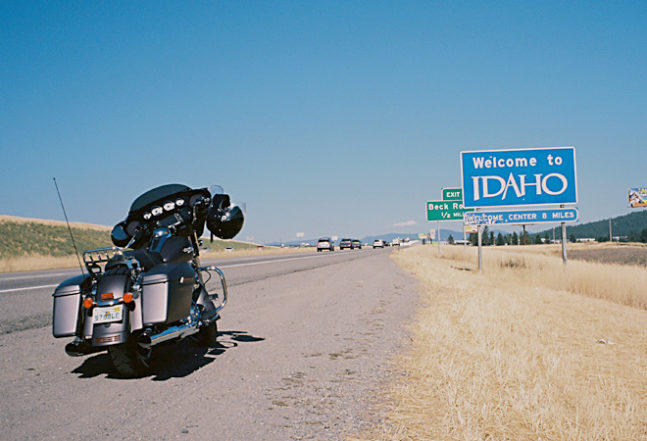
Northern Idaho: America’s Best Kept Secret
It’s with a heavy heart that I must confess I am about to break a promise I made to some fine people in a bar in a majestic land called Wallace, Idaho.
When I met them inside the tiny brewpub belonging to Wallace Brewing Company, I told them about how absolutely blown away I was by the local landscape. They joked that it took a lot of time and advertising money to convince people like me that their wonderful state was one giant, flat, ugly potato field.
They made me swear I’d keep my mouth shut, and with fingers crossed behind my back, I assured them I would. I’m sorry, guys, but I’m a damn liar.
The actuality is that the northern handle of Idaho, along I90, is filled with massive hills and mountains, towering pines, and beautiful lakes—specifically, the Coeur d’Alene, which is something like 30 miles away from Wallace. It’s a beautiful resort town, and I found myself stopped on the side of the road snapping photos at least three or four times more than I should have. Remember the part above about getting my ass kicked? Yeah. The Coeur d’Alene threw the haymaker that put me down.
East of Wallace, I rolled through a massive and beautiful stretch of the Lolo National Forest, straight on through to Missoula, Deer Lodge, and eventually Butte, before crossing over into Montana. It was all absolutely gorgeous, but nothing I saw on the trip—through Montana and Wyoming, into Colorado, and everything east—came close to that simply breathtaking stretch of highway in Northern Idaho. I’d put my bottom dollar on it being the most beautiful place in the Contiguous 48 states.
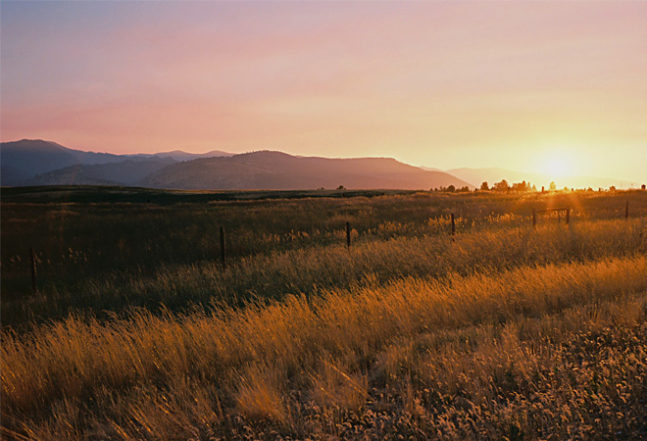
Montana Doesn’t Give a Shit What Time of Year it Is
Making a run like this across an entire continent and the climates on it means doing a hell of a lot of research into what kind of weather to expect. Well, I did. In fact, I probably did too much research. From that prep time, I concluded the chilliest weather would be on my way into Cody, Wyoming, on day one, and that it wouldn’t drop lower than mid to low 60’s. At highway speeds, the wind chill would be somewhere in the low 50’s to high 40’s—not bad at all.
What I actually encountered in Montana was one of the most unseasonably cool nights. Before I tell you what I experienced, let me first say that one of my favorite seasons to ride in is the late fall and early winter. The chill of the wind and a couple nearly frostbitten fingers remind me I’m alive. I’m the guy riding his bike around with flurries dropping.
But when you’re rolling down dark, deserted, and unfamiliar highways in the middle of the night; and it’s so cold you’re literally alternating your hands from handle bar grips to engine block in order to keep them from freezing; and you know that you have at least three more hours to go until you can stop for the night; and that the temperatures are probably going to drop another 10 degrees; and you’re contemplating just how much more you can take until hypothermia sets in, it becomes a chore. I don’t think I’ve ever been tested like that before in my entire life.
I don’t know exactly how cold it got that night, but the last time I looked at my bike’s thermometer before I pulled into Cody, it said 48 degrees Fahrenheit. With windchill, at 95+ mph, that put it somewhere in the mid-20’s. It was downright miserable.
That night, however, the only thing I could focus on was keeping my hands and legs from going numb. If there was a second, it was making sure no foxes jumped out at me from the side of the road (although that 800-pound Street Glide cut through one without issue at 60 MPH—I still feel awful about that, by the way). But it was mostly the cold.
That takes me back to the whole ‘Stick to the plan’ bit. I spent two or three more hours in the beautiful part of the day than I should have, and I knew I’d have to pay for it at some point, but didn’t care. I had a long time to think about that while my digits were freezing in the middle of Montana.
My bones were still frozen when I woke the next morning.

Riding on the Brink From Wyoming Into Colorado
The weirdest thing about riding through a state like Wyoming—especially when you were just riding through a state like Idaho—is how shockingly arid it all appears in contrast. There are massive expanses of nothing but flat, undeveloped land, far as the eye can see. It’s dry, and everything is yellow or brown and seemingly dead. After a couple hundred miles of that, you start to think some pretty weird shit. Notably: The government could absolutely have staged a moon landing out there somewhere. Or, if the mafia killed as many people as people say they did, this is the perfect hiding spot. It’s seriously desolate.
The other thing about massively flat area for so many miles is that you can see weather miles and miles away. So when I first saw those rain clouds pop up over the hills to the east—and they were looking mighty mean—I was hoping I’d miss them. About 15 minutes away from the largest and most ominous of the clouds, when I thought a bath inevitable, I stopped on the side of the road, took a picture of the looming trouble, and pulled out my rain jacket.
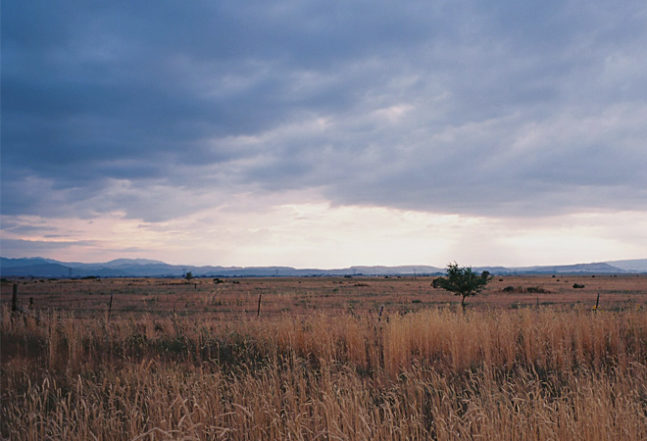
I sped on at full bore while the clouds moved into my immediate periphery. As I braced for raindrops and kept my eyes focused on the sunny skies in front of me, I slowly began to realize I was outrunning the damn thing. The clouds drifted from my right into my rear, and stayed there through Casper, then Douglas, until finally catching up and doubling back on me somewhere in the hour and a half it took me to roll into Cheyenne.
I remember pulling up to the pump at a random gas station off I-25 in Cheyenne, looking fearfully at the hellacious clouds moving in from the west. It was an hour and a half to Denver, where I’d be stopping for the night, and if I hauled just enough ass, I’d make it.
That turned out to be wishful thinking. About 15 minutes later or so, somewhere over the Colorado border, the skies turned dark and grey and I knew that there was no avoiding it now: I’d be showering earlier than I thought. And not in a rented room. By this time, it was late afternoon—somewhere between five or six o’clock—and the sun hadn’t yet begun to set, but it was strange to see the landscape so dark. I remember screaming down the highway. Everyone I saw looked at me like I just lost a family member–like I was on my way to a funeral–and all the cars and trucks slid calmly and steadily into the right lane to let me by. I think we all knew it was going to be bad.
Finally, the rain hit, and for a little more than 50 miles—including the 10 or so miles of traffic I hit coming in to Denver—the bike and I soaked. It can always get worse though, so count your blessings when it doesn’t, because the minute I got into the hotel for the night, the downpour began.

Finishing Up with Barbecue and Electric Style
The morning I left Denver on the 600-mile trek through Kansas and into Kansas City, Missouri, I knew that it was going to be a long and hot one. With the chill of Wyoming still in my bones (it’s still hard to believe that I’d just experienced that shit show less than 48 hours earlier), it was a welcome reprieve. In fact, east of Denver, into America’s center, became a logistical turning point. Rather than have to worry about whether or not 85-degree days would turn into 45-degree nights, I could remain confident in knowing that 100-degree days would turn into 95-degree nights—in hindsight, that deal doesn’t really sound any better.
My time in Kansas City was short-lived but worthwhile. I got to experience Joe’s Kansas City Bar-B-Que. This now world-famous barbecue joint has won several best-in-country awards for its incredible home-style barbecue and warm hospitality. What it was not known for, however, was its early closing time on weekdays. By the time I was finally rolling into town at 8:30 that evening, I realized Joe’s was closing up for the night in less than a half hour. I was the last customer they allowed in for the evening, and frankly, it was everything I needed. Even though you’re practically guaranteed to wait in line, they have a small bar that serves beer, and it’s a gentlemen’s rule (and by “gentlemen’s rule,” I mean “I just made this up”) that if one must wait in line, one should only do so with a beer. When it was my turn to order, the exceptionally kind staff at Joe’s had learned about my circumstances from the security guard and gave me a healthy sampling of everything they have to offer–and it was everything I’d hoped for.
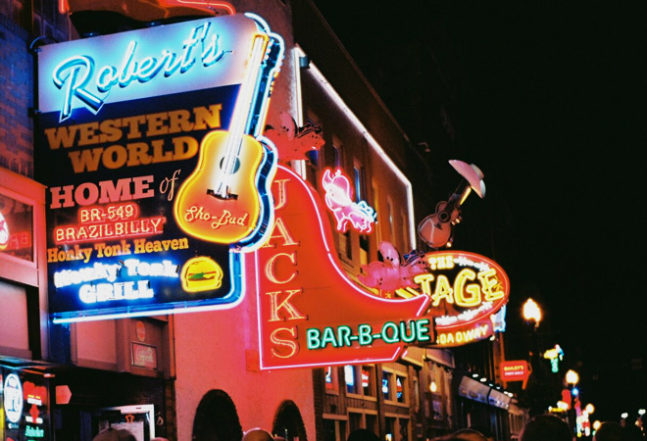
From there it was onto Nashville. Now, the thing about Nashville is it looks like a smaller Las Vegas from the road into town—a distinction I learned the locals really, really hate. What I also learned about Nashville is that it’s the bachelorette party capital of the world, and that they really take their honky-tonk seriously. The main drag in Nashville’s downtown is a street called Broadway, and it’s a lot like New Orleans’ Bourbon Street. The electric lights from the brick and mortar bars flood out onto the street with the sounds of music coming from everywhere. Every bar has its own band playing every hour of the day, and it’s one of those places where a band will close out the bar at 2 a.m., and there’s another bar ready and waiting for the hangover crowd. There are rooftop bars on Broadway, packed with partying, smiling, yelling patrons no matter what time it is.
I woke up hungover the next day and hit the road to my final destination, Richmond, Virginia. I have no problem admitting here that I made a terrible mistake when mapping out my itinerary, and failed to consider how long of a ride it is from Nashville to Richmond. In my head the ride seemed like a short 400, maybe 500 miles. As it happens, it was a grueling 600-mile dust-up that took me east, through Knoxville, and then northeast up through George Washington and Jefferson National Forest, up into Charlottesville, then back south into Richmond.
Though the ride was painfully long on that last day (especially the 200-ish miles from west of Roanoke straight through to Richmond that evening), riding through that stretch of I-81 that connects Cherokee National Forest to George Washington and Jefferson National Forest was probably the second-best riding of the trip. In fact, it was the only time during my entire 3,500 miles that I got to split a lane with another rider; a crazy old grey beard on done-up Victory bagger who thought rain boots made for good riding boots, and who rode the absolute crap out of his bike.
When I hit Richmond that evening, I considered my mission accomplished. I set out to see one coast to the other, and in less than five days, I did it. Most importantly (to me, at least) was that I didn’t take the easy way out. I could have made it a 3-day 2,900-mile trip and just bee-lined it for the coast. Instead, I rode the route I wanted, stopped in all the cities I’d ever dreamed off, and saw and experienced damn near all of what I was expecting—and a lot that I wasn’t.
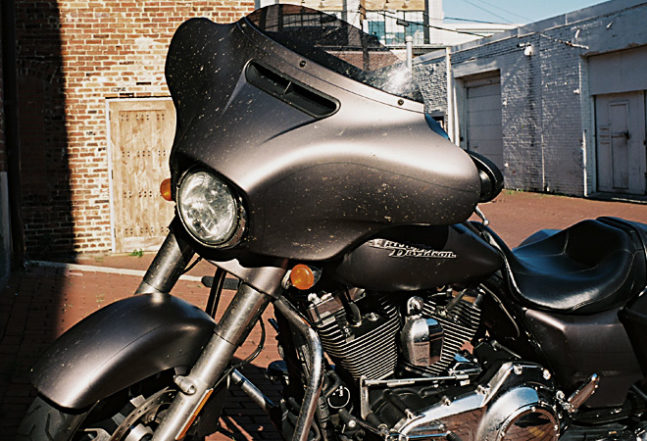
The Importance of “Doing The Damn Thing”
The third-most popular question I received: “Why did you do it?”
I did it because doing the damn thing is important. A cross-country run is something every rider dreams of, and 3,500 miles in less than five days takes dedication, skill, and a real firm butt to accomplish. I did it because adventure is equally important, experiencing the things this world has to offer, and doing things worth writing about. I did it, if I’m being honest, for my father, who died before he had the chance to make this journey himself, and for Richie, the man who inspired me to start riding to begin with. Most importantly, I did it for me.
Thanks to the folks at EagleRider for making this possible, and Harley-Davidson for making the best damn motorcycles in the world. If you want to learn how you can arrange your very own self-guided motorcycle tour across this great nation, head on over to EagleRider.




